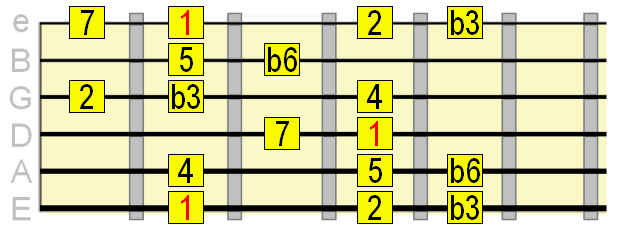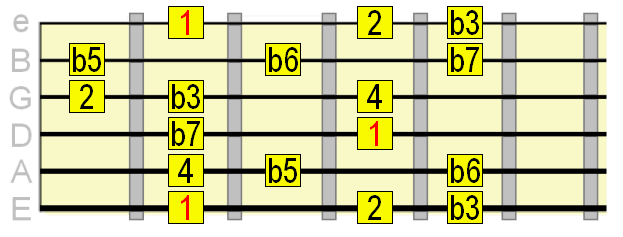Home › Q&A
Scales Over Minor Key Progressions
Question by Ishan
(Kolkata, India)

If I am soloing over the progression Am G F Em then I can use the A natural minor scale and also I can use scales with respective chord changes.
My doubt arises if the progression is Am G F7 E or Am G7 F E or Am G F E7 E.
Would I use the same scale as mentioned for the above progression and if not please tell me which scales I can use.
Suggestions
An excellent question, Ishan.The progression in question (Am, G, F, E in the key of Am) is known as an Andalusian cadence.
It's a staple progression in traditional flamenco music, but you'll also hear it widely used in classical, pop and rock.
So this is a good progression to accustom your ears to hearing in different keys.
As you correctly stated, if the sequence (in the key of Am) was:
Am - G - F - Em
That's a natural minor progression. Why? Because these four chords are part of the A natural minor scale's harmony.
In other words, these four chords consist entirely of notes from the A natural minor scale.
But there are also natural extensions of these chords that would further imply natural minor harmony...
Am7 - G7 - Fmaj7 - Em7
These are the 7th chords that, again, consist entirely of the notes of the A natural minor scale.
So your example with G7, as long as no other chords are changed, is still within the natural minor scale.
But of course, we are not tied to one scale... we can make chord substitutions.
The most common substitution you'll hear is turning Em (the 5 or V chord of A natural minor) into a dominant 7th - E7.
This means, if no other chords have been modified, we can still play A natural minor UNTIL we get to that E7 chord.
Because E7 contains notes outside of A natural minor (the major 3rd of E7 to be exact), we need to modify A natural minor to accomodate it.
This one is simple - when the V chord in a natural minor progression is MAJOR, simply switch to harmonic minor in the same position you were playing natural minor.

Why? Because harmonic minor contains the major 3rd of the major V chord that we need.
The major V chord is a natural chord of harmonic minor, in other words.
Whereas the minor v chord is a natural chord of natural minor.
So, here's how I would play the new sequence...

Practice this natural/harmonic minor switch in different keys.
Em - D - C - B7
Dm - C - Bb - A7
etc.
So that's the most common substitution of a natural minor progression you'll hear - turning the minor v chord into a major V chord (V7 usually).
Now on to the trickier substitution you mentioned... turning the F major VI chord, which would be Fmaj7 in A natural minor, into a dominant 7th, F7 chord.
There is a general "rule of thumb" as far as which scale we use over that F7 chord.
When a chord is substituted with a dominant 7th chord, in most cases the Lydian dominant scale will be a good fit.
So, in the following sequence:
Am - G - F7 - E7
We would play A natural minor over the Am and G chords as usual, and A harmonic minor over the E7 chord as explained above, but try playing F Lydian dominant over the F7 chord.
The easiest way to play this is to take the A natural minor pattern and flatten the 5th (b5).
This is because "Aeolian b5" is a related mode of Lydian dominant (as they are both modes of melodic minor).
Basically, that means we can play a slight variation on the natural minor/Aeolian pattern, by flattening the 5th, and it will use all the notes of F Lydian dominant.
This is probably the easiest way to play it, because you're already in that A natural/harmonic minor position...

So whenever you see the VI chord in a minor key progression as a dominant 7th chord (VI7), simply change the natural minor scale of that key to Aeolian b5 (natural minor with a flat 5th).
Back to the progression, there are three scales to think about now...

You'll notice that all three scales share the same root as the key - A. This will help you play economically in the same position without having to jump between each chord's root.
I hope this has helped. Comments and further questions welcome - use the link below. Cheers.
Share Your Comments
|
||
|
||
|
||